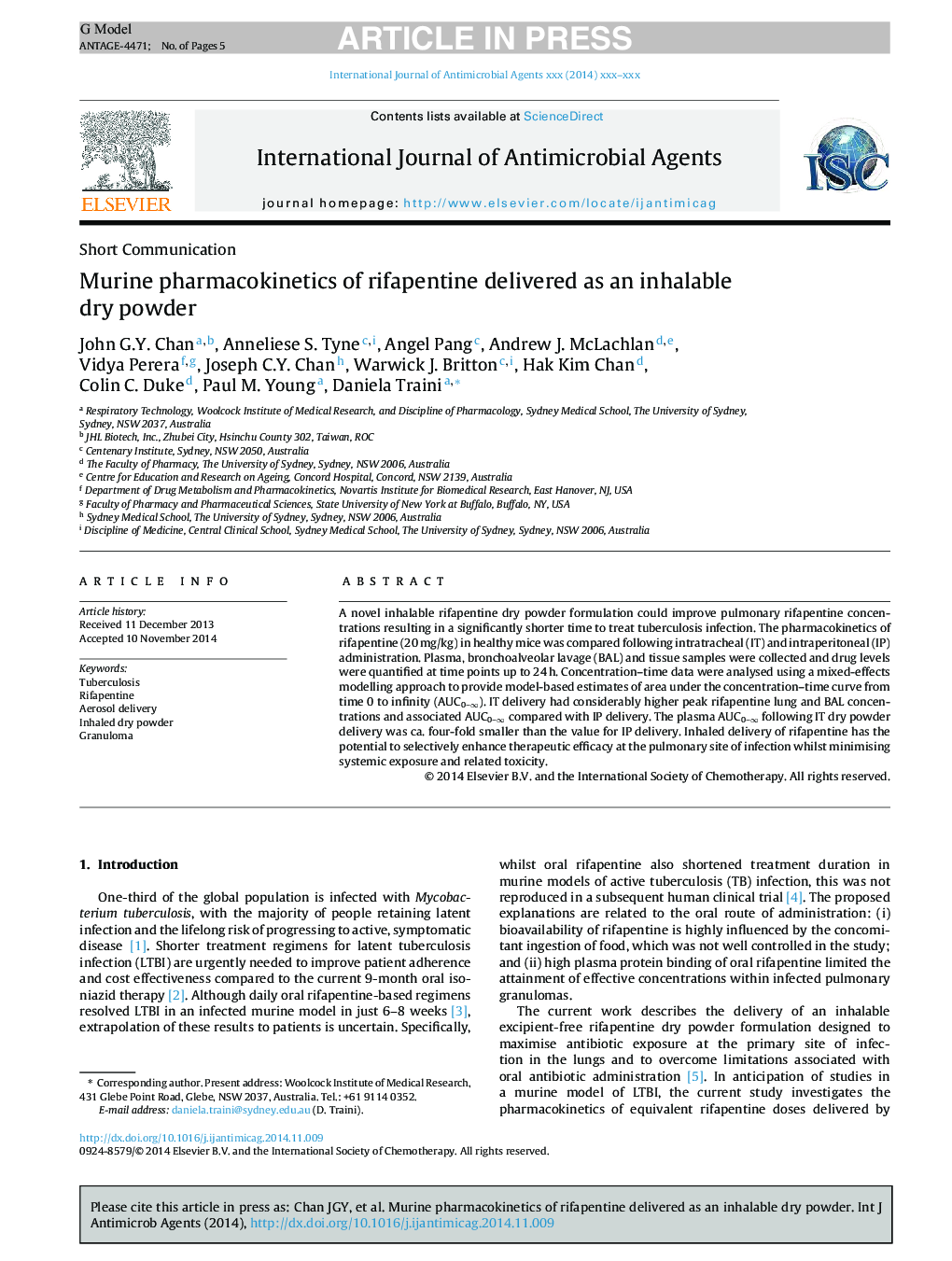| Article ID | Journal | Published Year | Pages | File Type |
|---|---|---|---|---|
| 6117817 | International Journal of Antimicrobial Agents | 2015 | 5 Pages |
Abstract
A novel inhalable rifapentine dry powder formulation could improve pulmonary rifapentine concentrations resulting in a significantly shorter time to treat tuberculosis infection. The pharmacokinetics of rifapentine (20Â mg/kg) in healthy mice was compared following intratracheal (IT) and intraperitoneal (IP) administration. Plasma, bronchoalveolar lavage (BAL) and tissue samples were collected and drug levels were quantified at time points up to 24Â h. Concentration-time data were analysed using a mixed-effects modelling approach to provide model-based estimates of area under the concentration-time curve from time 0 to infinity (AUC0-â). IT delivery had considerably higher peak rifapentine lung and BAL concentrations and associated AUC0-â compared with IP delivery. The plasma AUC0-â following IT dry powder delivery was ca. four-fold smaller than the value for IP delivery. Inhaled delivery of rifapentine has the potential to selectively enhance therapeutic efficacy at the pulmonary site of infection whilst minimising systemic exposure and related toxicity.
Related Topics
Life Sciences
Immunology and Microbiology
Applied Microbiology and Biotechnology
Authors
John G.Y. Chan, Anneliese S. Tyne, Angel Pang, Andrew J. McLachlan, Vidya Perera, Joseph C.Y. Chan, Warwick J. Britton, Hak Kim Chan, Colin C. Duke, Paul M. Young, Daniela Traini,
